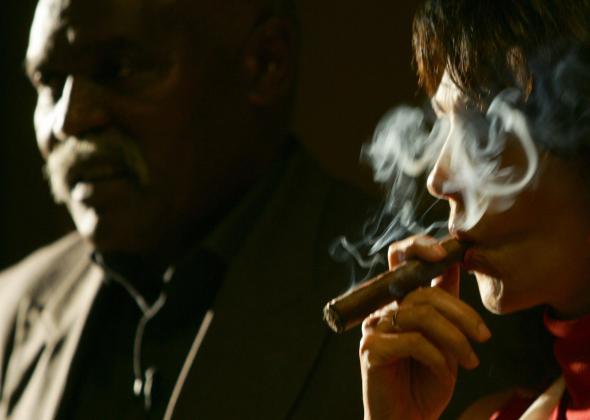The biggest week for U.S.-Cuban relations of the past 50 years is also shaping up to be a big one for the cigar industry. As part of sweeping measures announced by the White House on Wednesday, American citizens licensed to travel to Cuba will now be allowed to import $400 worth of goods, with up to $100 of that coming from alcohol and tobacco products. In short: Cuban cigars are no longer illegal.
Since the U.S. trade embargo against Cuba took effect, Cuban cigars have become something of the stuff of legend. Before instating the ban in 1962, President John F. Kennedy famously secured 1,200 of the cigars for himself. They are widely thought to be superior to all other varieties and command hefty prices. In 1996, the New York Times reported that a box of 50 Cuban cigars would fetch up to $850 on the black market in the U.S. Today, genuine handmade Cuban cigars tend to start at $250 for a box of 25, says Jeff Borysiewicz, president of Corona Cigar Co., an online retailer. The finest kinds can retail for hundreds of dollars more.
“It’s a forbidden fruit,” explains Eric Newman, president of Tampa, Florida–based J.C. Newman Cigar Co., a cigar manufacturer. “The biggest market in the world prohibits them from entering the marketplace.” Rather than deterring U.S. consumers, that ban may have in fact proved the biggest selling point for Cuban cigars over the past 50 years. People in the industry compare their allure to that of Coors beer before it became easily available beyond the American West. So great was the East Coast’s unrequited love for Coors in the 1970s that the quest to bring the beer from West to East was depicted in the popular 1977 film Smokey and the Bandit.
With both Coors and Cuban cigars, the question has been whether the product is ultimately worth the hype surrounding it. “Coors isn’t a bad beer, but is it the best beer in the world?” Borysiewicz asks. “Cuban cigars are kind of the same way.” Newman offers a different comparison: “You know how in Forrest Gump he says, ‘Life is like a box of chocolates—you never know what you’re going to get?’ You get a box of Cuban cigars and one will be a wonderful, flavorful cigar, and the next will be plugged so that you can’t even draw through it.” On top of that, the market for Cuban cigars is also plagued by counterfeits.
Despite their inconsistency, the built-up mystique of Cuban cigars has been enough to cultivate a robust black market for them in the U.S. Newman estimates that 5 to 6 million are smuggled into the country each year. (In 2013, a Brooklyn artist trained dozens of pigeons to smuggle Cuban cigars across the border as part of an exhibition.) In part because of this, cigar experts don’t think they’ll see much of an impact on the market from the import changes. Add to that the fact that $100 worth of cigars really isn’t much at all—maybe five to 10, if they’re real—and the new allowance for American travelers isn’t looking too disruptive.
That said, prices for Cuban cigars themselves will probably spike on the news. “People will pay the expensive prices because there’s a lot of curiosity,” says Newman. “If we haven’t been able to partake in a product for over half a century, there’s all this pent up demand. People will try it.”
